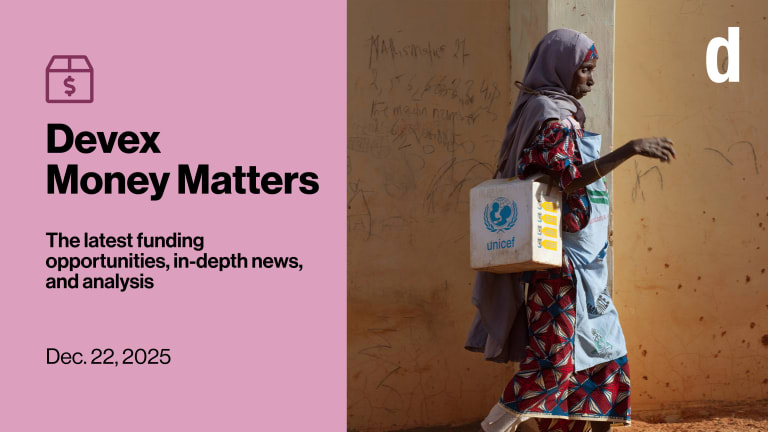
Devex’s head of analytics, Raquel Alcega, takes a look at the fine print behind the data cited in a recent Associated Press article.
Last week, an exclusive by Associated Press claimed that aid from top donors is dropping, “even as need soars.”
Citing an analysis from Development Initiatives, a respected U.K.-based consultancy, the story claimed that “Funding commitments, for the virus and otherwise, have dropped by a third from the same period last year.” But is that true?
The analysis of how aid budgets are changing due to the pandemic is based solely on data from the International Aid Transparency Initiative. As DI admits, IATI data is limited. It is not compulsory for donors to report to IATI, despite the advocacy efforts toward this. It is also not mandatory for donors to mark their commitments as coronavirus-related within IATI, and there is no standard definition of what constitutes a coronavirus-related investment.
DI’s argument is that IATI is the data source that allows the closest tracking of real-time changes in both humanitarian and development aid. But while IATI data has improved a lot — with more than 700 organizations now reporting their commitments and spending in this common open data standard — it is widely recognized that the quality and scope of the data requires continuous improvement.
And, even assuming the data is accurate, AP’s interpretation is misleading.
The analysis focuses on comparing what happened in the first five months of 2020 with what would have happened if COVID-19 hadn’t happened, based on aid commitments registered with IATI from key donors since 2015.
Also, the statement from AP regarding the drop of a third in aid funding during the first five months of the year corresponds only to the largest bilateral agencies considered in the analysis.
According to DI’s analysis, aid commitments during this time period were $16.9 billion, compared to $23.9 billion during the same time period in 2019, which means that real 2020 aid commitments are roughly a third less. For DI, this suggests bilateral actors might have been paying “the economic price of Covid-19.”
On the other hand, the analysis shows that multilateral organizations — including development banks, United Nations agencies, and the Global Fund — have published more aid commitments in this time period than expected.
As a result, DI concludes that the overall trend in aid commitments — based on IATI’s data — “shows an overall increase in spending over the early months of 2020,” potentially because of the response to the coronavirus crisis. This is not what the AP article communicates. Taking just a few lines of data analysis is not a reliable way to explain the story. Data has its nuances, its context, and rarely tells the whole story by itself.
Looking at bilateral commitments alone, DI calls for more detailed, timely data to be able to conduct a more reliable analysis.
This first analysis is a useful exercise for taking the available data into account. But understanding that the data source is not comprehensive and that for government agencies, that period of time is considered as one of the most stressful, it’s worth taking these numbers with a pinch of salt.
For access to in-depth analysis, insights, and funding opportunities from over 850+ sources — combined with Devex Pro news content — sign up to a Pro Funding subscription online today or get in touch to learn about our Pro Funding group options.








